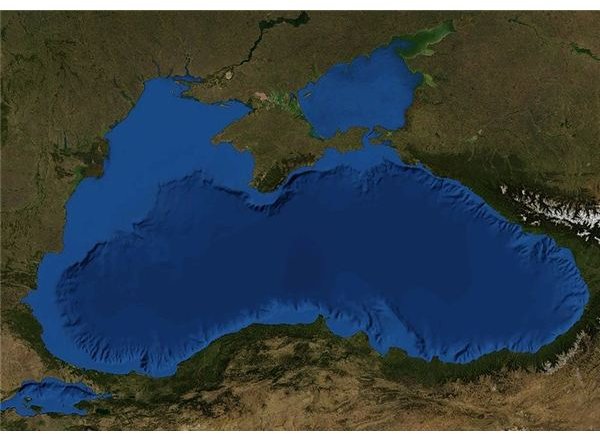Underwater River at Bottom of the Black Sea - Implications for Aquaculture and Marine Ecosystems
Undersea or Underwater Rivers
Undersea or underwater rivers consist of water that is denser compared to their surrounding water, and they form due to the difference in salinity and sediment content. The water in these rivers contains a mixture of sand, mud, and water that is denser than the surrounding water and therefore sinks to the bottom. Their behavior is similar to the rivers of the land. This means that they flood, create river banks, cause erosion, and they even have rapids and waterfalls_._
Undersea rivers are difficult to study due to their power and unpredictability. Only recently have the researchers been able to study such a river by using a robotic submarine and sonar scans in the Black Sea.
Rivers Across the World
Black Sea:
The first “undersea” river to be discovered is currently flowing from the Mediterranean into the Black Sea through the Bosphorus Strait. The discovery was announced on 1 August 2010 by researchers of the University of Leeds and the river is yet to be named. The undersea river of the Black Sea is the first and only river that has been discovered to be actually flowing. Its direction is towards the water with the lower salt content. The river flows very fast, reaching a speed of 4 miles/hour. The flow is 22,000 cubic meters per second, and this fact would make it the sixth largest river in the world. It is 37 miles long, 35 m deep, and 0.6 miles wide_._
This is the only active undersea river to have been found so far, although there are other large channels such as the one at the coast of Brazil where the Amazon enters the Atlantic Ocean. A flow in this case has not been observed yet.
_
Mexico:
A rather different example of underwater river is the one that flows through the cave of Cenote Angelita in Mexico’s Yucatan Peninsula at about 100 feet beneath the surface of the water. This relatively small river consists of a thin layer of hydrogen sulfate that separates the fresh water at the top from the salt water below. Click here to see some images of this amazing underwater river.
Exploitation of Undersea Rivers and Implications
We are only now discovering the significance of underwater rivers and their implications for aquaculture. Research shows that their contribution to marine ecosystem may be extremely vital in a number of fields:
- Undersea rivers flow deep down the sea bed and end up into the abyssal plains of the oceans. These vast areas have a shortage of nutrients and cannot support the meager life of these deserts. These rivers could actually be responsible for sustaining life in these depths by delivering sediments, ingredients, nutrients, and minerals from the rich shallow waters.
- Oil companies are thinking of taking advantage the existence of these underwater rivers. The collection of scientific data regarding the composition, flow, and other characteristics of these rivers could reveal more about the sea floor and the possibility to drill in these areas. However, many claim that this is a dangerous scenario since a possible oil spill could be carried to deep waters and unknown ecosystems.
- Another suggestion is the use of this river flow to produce electricity in the same manner as it is done with rivers on land. Actually there are turbine designs (e.g. the coriolis turbine) that could take advantage of the ocean’s currents’ kinetic energy to produce electric energy. A more advanced design could be used in the case of undersea rivers (if more of them are to be discovered).
- Apart from all the above, the study of river sediments could reveal a lot about past climate changes, geological formation, prehistoric marine life, the possible effects on aquaculture, etc.
Sources:
- Undersea river discovered flowing on sea bed, By Richard Gray, The Telegraph
- “Robotic sub records flow of undersea river” by futurity.com
- Breathtaking Views of Mexico’s Hidden Underwater River by webecoist.com
- www.greenfudge.org
Image Credits:
- Illustration of the Black Sea. The Bosphorus Strait is at the Lower Left (en.wikipedia.org)
